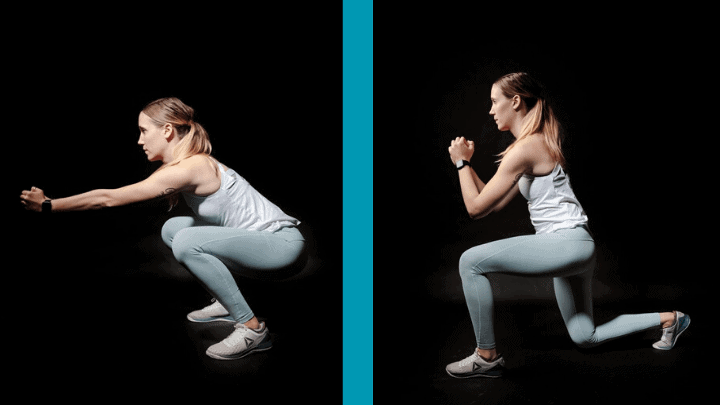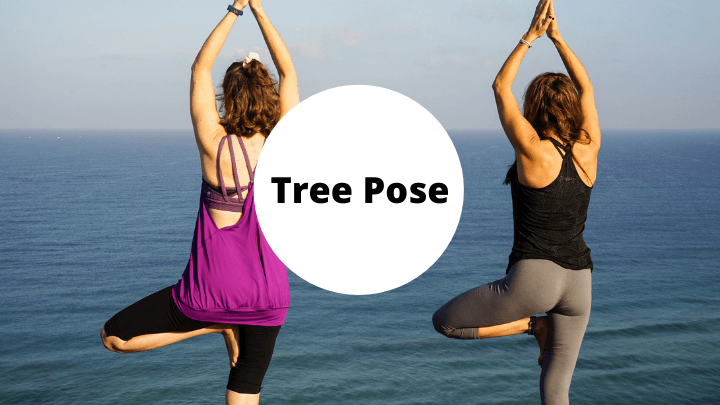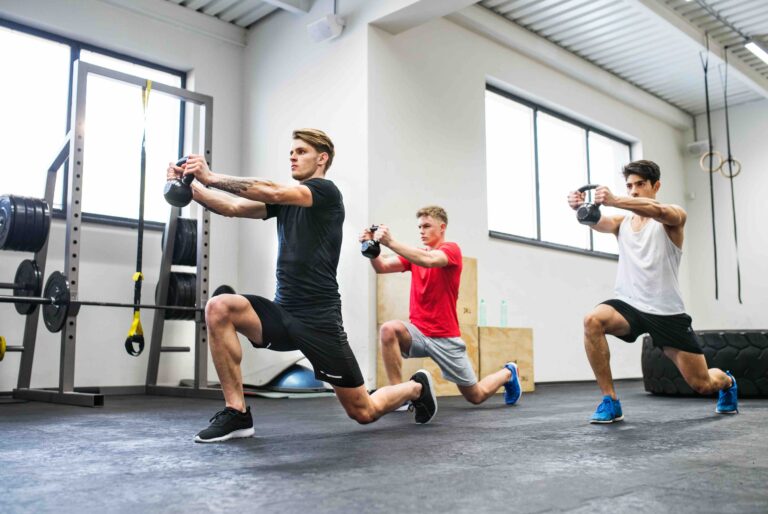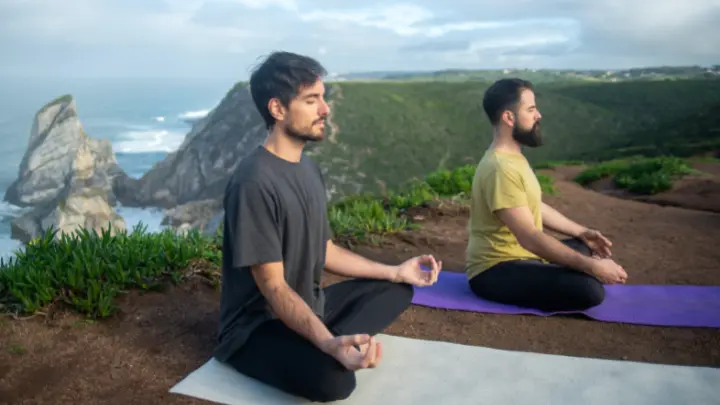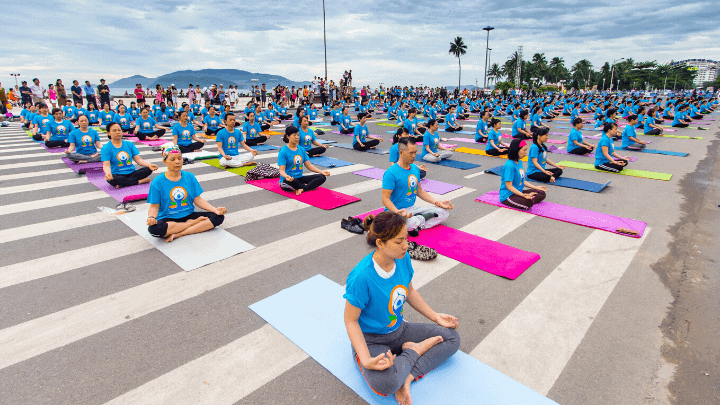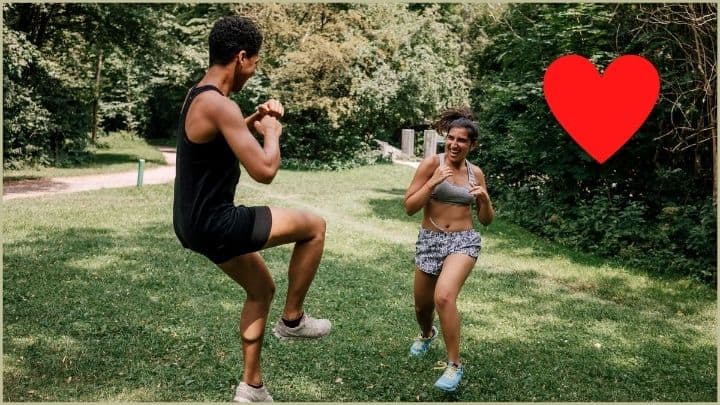This is a complete guide to lunges vs. squats.
In this guide, you’ll find out research-backed secrets into:
1. What exercise (lunges or squats) is best and why, including:
2. Research-backed breakdown of the squat
3. Research-backed breakdown of the lunge
4. A complete lunges and squats workout
5. Lunges vs. squats for weight loss
Plus lots more!
So if you want to make sure that you know nearly everything you need about lunges and squats, you should get a lot of value from today’s guide.
Are Lunges or Squats Better ― and Why?
Answer) For overall muscle development and injury rehabilitation[1]: Both!
Key Summary of Why Both Exercises Are as Good as Each Other
The standing squat and forward lunge are equally as good as each other; however, this is dependent on …
- If you’re looking to build muscle: If you’re looking to become big, the squat is the better option as you can add additional weight to this exercise. However, this doesn’t mean you should completely overlook single-leg training from your leg workouts because the lunge will increase your balance, stability, and flexibility, therefore enabling you to be as athletic as possible when it comes to performing heavy-load exercises like the squat.
- If you’re a beginner: A body-weight squat is the better exercise because lunges require good balance that, if ignored, could result in a loss of balance and possible injury.
- If you’re overweight: Body-weight squats are the better exercise for the same reason as the point above as lunges ― especially weighted ― require a lot of balance and stability.
- If you lack flexibility: Squatting with a stiff lower body can cause poor form. Most notably, you can have a “Butt Wink problem, where your tight hamstrings can’t go any lower in the squat, causing your pelvis to move from an anterior pelvic tilt (arched lower back) to a posterior lower back (rounded lower back), which will place tension on this area. Meanwhile, body-weight lunges are a dynamic movement that can improve your flexibility.[2]
- If you have an injury: Research shows that both walking lunges and single-leg squats “are both effective in rehabilitation programs and should be added to injury prevention training programs.”[3][4][5]
Comprehensive Explanation of What Exercise Is Better and Why
There are a wide variety of leg exercises that will help you develop strong thighs, hamstrings, glutes, and calves. However …
Many trainees have different opinions about what leg exercise is superior.
But the thing is …
Both are equally as superior as each other.
Both are compound movements, which are movements that engage more than one muscle group, and help develop functional strength (the building block of strength to help you in your day-to-day activities).
We know compound movements are what give you a prominent stimulus for growth.
Research has shown that these two compound movements engage and strengthen the lower body thoroughly.[6, 7]
Let’s analyze each exercise so that you can uncover the difference between the two.
Squats
This exercise has long been crowned “The King” of all exercises.
It is, without a doubt, a natural human movement pattern, which every beginner should learn at the very start of their training.
The squat (or single-leg squat, in this case) activates lower body muscles more compared to a forward lunge (see chart below).[8]

The good thing about squats is that they are not particularly difficult to learn due to their nature, and, on top of that, they engage pretty much all the muscles of the lower body.
Muscles Worked in a Back Squat
The primary muscles worked in a back squat include:
- Quadriceps
- Glutes
The secondary, stabilizer muscles worked in a back squat[9] include:
- Hamstrings
- Gastrocnemius
- Soleus
- Adductors
- Traps
- Mid-back
- Erectors
- Obliques
- Abdomen
If you are a beginner who wants to get in shape, but you don’t know much about training, then learning the right technique of the squat and overloading it gradually will be of great use.
Should You Squat Daily?
No, you don’t have to squat every day. However, including squats in your strength training regimen regularly will improve your lower body strength and functionality.
Of course, you can start off with just your body weight.
When you feel ready, you can add weights with:
- Barbells
- Dumbbells
- Machine squats
- Kettlebells
- Weighted plates
Besides improving your lower body visually and functionally, you may also prevent lower back injuries[10] during everyday tasks.
These tasks could require you to squat low or pick something heavy off the ground.
Nonsquatters will likely bend over with straight legs, which puts much more tension on the disks of their lower back. But …
If you squat consistently, you’ll remember to pick up the object carefully in a squat position, using the power generated by your legs as you can see in the image below:

In comparison to lunges, squats are less demanding, in terms of balance, because your feet are aligned symmetrically.
With a forward lunge, it is a different story as you have to take a step forward and engage more balancing muscles.
The Benefits of Squats
[table id=9 /]
The table above shows three common benefits of the squat, but the squat is an exercise that has many more:
- Squats motivate you: Think about how many variations of the squat you can do? Switching up your squats will make the exercise interesting, all while activating different muscle groups. For example, can you do a single-leg squat?
- They can help you stand up: Every time you get up from your chair, you do the concentric phase (standing phase) of a box squat. The more often you do them, the easier it will be for you to get up. This is especially important as we get older.[11]
- Increases blood flow (including when you’re on the toilet): When you squat (or simply exercise), the flow of blood around your body increases because the blood vessels in your muscles dilate. Squats, in particular, have proven to increase blood flow to your leg veins, which can help you when you’re sitting on the toilet.[12]
- Squats can prevent heart attacks and strokes: In general, resistance training can reduce the risk of stroke or heart attack by an extraordinary 40 to 70 percent, according to researchers at Iowa State University.[13]
The Different Squat Variations
Like the lunge, the squat presents a wide variety of variations that can work a variety of different muscles.
In fact, there are more than 45 squat variations! But …
I’m going to show the top three so that you’re not overwhelmed.
Variation 1. The Basic Squat (Beginner and Advanced)
Love it or hate it (your body loves it!), the basic squat is the ‘KING’ of squatting. ?
It is easy to do, extremely effective for strengthening both the major and muscles of your lower body and is an exercise that can be incorporated into every lower-body strength training workout.
You can also overload your muscles by adding additional weight in the form of a barbell, kettlebell, dumbbell, or plate.
How to Do the Basic Squat
Click here to jump down to the steps we’ve already highlighted below.
Variation 2. The Single-leg Squat (Beginner and Advanced)
Single-leg training alone is fantastic because it improves your balance and overloads the leg you’re working.
Just look at how much better the single-leg squat (monopodal squat) is for your lower body in comparison to other exercises:

How to Do the Single-Leg Squat
Single-leg Squat: Glute-strengthening Exercises for Runners
Step 1. Begin the exercise by standing on one leg with your feet pointing straight with the knee on your opposite leg slightly bent.
Step 2. Keep your back straight and extend your arms out to balance the movement.
Step 3. Lower to a squat position, ensuring that your knee does not cave in and your opposite foot is off the floor.
Step 4. Try smaller half-squats to begin with until you feel comfortable working your way down to the ground.
Sets/reps: Do four sets of 10 to 12 reps on each leg (two on each leg).
Rest time: Rest for 60 seconds between sets.
Progression: Progress by resting a dumbbell or kettlebell on your shoulder (the same side to the leg you’re squatting with). Increase this weight gradually over time.
Variation 3. Wall Squat
The wall squat is a great exercise, especially for those recovering from an injury.
This is because you have the balance of the wall behind you giving you the control to strengthen your muscles at your own pace.
Furthermore, wall squats give you the option to work isometrically (where you are not moving), giving you a mental challenge and an exercise that complements your dynamic workout routine.
How to Do the Wall Squat
Step 1. Begin with your back flat against a wall, keeping your feet approximately 2 feet away from the wall slightly more than shoulders’ width apart.
Step 2. Squeeze your core and glutes as you glide your back down the wall slowly until your thighs are in line with the floor.
Step 3. Hold this position (pushing your heels into the ground) for 30 to 60 seconds and slide back up the wall to a standing position.
Step 4. Rest for 60 seconds before repeating the exercise again.
Note: Keep a timer with you so that you can time yourself during the exercise.
Sets/reps: Three sets of 30- to 60-second isometric (static) holds
Rest time: 60 seconds rest
Progression: Increase the time under tension from 60 seconds to 2 minutes.
If this becomes too easy, hold two dumbbells by your side and add more time and weight continuously to the exercise.
Summary: Squats are an effective exercise for developing a variety of lower-body muscles, which will help support you through daily activities and also result in good posture as you age.[14]
Lunges
A lunge is a single-leg body-weight exercise that has a number of variations that we’ve covered in this article here.
Whether you’re a bodybuilder or an athlete, lunges should always make up a part of your lower body training.
This is because they train different lower body muscles that, if strengthened, can help you enormously everywhere else around the gym.
You’ll also be able to load this exercise because the movement is done one leg at a time where you can also use weights.
Whether you’ll be using weights or not, the lunge ― in any variation ― demands much more balance and, as a consequence, helping synergistic muscles (muscles that support the exercise) are recruited to maintain your position.
Without a doubt, lunges are one of the best exercises to develop strength, coordination, balance, and flexibility of the lower body and core.
Muscles Worked in a Forward Lunge
The primary muscles worked in a forward lunge include:
- Quadriceps
- Hamstrings
- Glutes
The secondary muscles worked in a forward lunge, which are fundamental for balance, include:
- Transverse abdominus (abs)
- Abductors (hips)
- Gastrocnemius (upper calf)
- Soleus (lower calf)
The Benefits of Lunges
[table id=10 /]
The table above shows three common lunge benefits, but the lunge has many more:
Lunges can prevent muscle imbalances: It is very common for people to have one side stronger than the other, so lunges target one specific side of your lower body (or one leg) at a time.[15]
It is a dynamic exercise that improves your flexibility: Lunging can improve your dynamic flexibility as you’ll be lengthening your abductors (hips) eccentrically.[16]
The Different Lunge Variations
Did you know that there are more than 20 different lunge variations?
Luckily for you, we’re not going to go through all of them today because …
We’re going to show you the top three most effective (and simplest) lunges that anyone can do.
You’ll also find that each lunge variation has a progressive exercise as it will become too easy for you with practice.
Here are the top three lunge variations.
Variation 1. Reverse Lunge
The reverse lunge is number one on our list because it is a terrific beginner exercise that can be especially effective if you have knee pain.[17]
The backward movement changes your position from an open chain to a closed chain exercise, which means that you’ll experience less shock as your foot strikes the ground.
In comparison to the forward lunge, the reverse lunge is also a better exercise for developing your quadriceps.
This is because the backward force enables you to load both your hip and quad better.
You can use your own body weight (recommended if you’re a beginner) or a pair of dumbbells.
How to Do a Reverse Lunge
Step 1. Stand up tall, shoulder-width apart, making sure that there are at least 6 feet of space behind you.
Step 2. Keep your hands by your side.
Step 3. Step back approximately 3 feet with one leg, ensuring your back leg moves in one straight line and you’re squeezing your core and glutes (rear end), which will help you stay balanced.
Step 4. Land on the ball of your back foot (avoid touching your heel on the ground) and drop down vertically slowly, staying well balanced until your knee touches the floor ever so slightly. You should be tilting slightly forward yet remaining upright.
Step 5. Push off with your back foot until you reach the starting position.
Step 6. Repeat the movement on the same leg until you reach the total number of reps.
Sets/reps: Three sets of 10 to 12 repetitions on each leg.
Rest time: 30 seconds rest between each leg.
Progression: You can progress this exercise with the reverse lunge rotation, reverse lunge to knee drive, and reverse lunge overhead press.
All of which can be completed with or without weights.
Variation 2. Lateral Side Lunge
The lateral lunge is another excellent exercise which strengthens your inner thighs as well as your glutes, hamstrings, and quadriceps.
How to Do a Lateral Side Lunge
Step 1. Stand up tall, keeping your feet shoulder-width apart, and your hands out in front of you. Ensure there is at least 6 feet of space to the left and right of you.
Step 2. Engaging (squeezing) your glutes and core, take one wide step of at least 3 feet to the left of you, and land on your left foot flat on your floor, ensuring both feet are flat on the floor and are both facing the same direction.
Step 3. Upon landing, bend your left knee and push your hips back, lowering slowly.
Step 4. Push off with your back leg until you reach the starting position.
Step 5. Repeat the movement with the same leg until you’ve completed all of the reps.
Sets/reps: Three sets of 10 to 12 repetitions on each leg.
Rest time: 30 seconds rest between each leg.
Progression: You can progress this exercise with a resistance band between your legs, a kettlebell in your hand, or by performing the dumbbell goblet adductor lunge, which is demonstrated here.
Variation 3. Explosive Sprinters Lunge
The explosive sprinters lunge is an advanced exercise that challenges the mobility and stability of your entire body.
This exercise should be used to improve your force output so that you can perform explosive unilateral movements at a high velocity.
Let’s jump into it.
How to Do an Explosive Sprinters Lunge
Step 1. Stand tall with your feet shoulder-width apart, keeping your hands by your side.
Step 2. Step back at least 3 feet with one leg, ensuring your back leg moves in one straight line, and you’re engaging your core and glutes (rear end) to keep stable.
Step 3. With the ball of your foot (not heel) on the ground behind you, keep your chest up and place your hands slightly out in front of you to both sides of your feet.
Step 4. Push off with your back leg explosively and bring it all the way up until your knee is up to your chest and your opposite leg is also in the air.
Step 5. Land carefully on your opposite leg and repeat the movement until you’ve completed all your reps.
Sets/reps: Three sets of 10 to 12 repetitions on each leg.
Rest time: 45 seconds rest between each leg.
Progression: There is no progression for this exercise.
Summary: Lunges are an excellent exercise you should add to your workouts. They make you a more athletic individual with better balance and flexibility and who has a stronger core.
Ultimately: Include both squats and lunges into your workout routine for greater diversity and athleticism. This will lead to greater muscle development, flexibility, stability, and balance.
Lunges and Squats Workout

We know that not all of you will have access to a gym, which is why both of these workouts can be done at home.
Workout 1. Strength Training
This workout is a complete lower body body-weight workout.
If you are more advanced, feel free to add a comfortable amount of weight to the exercise.
Let’s jump into it!
Exercise 1. Body-weight Squats
Sets: Four
Reps: 15
Rest time: 60 seconds between sets
This first exercise will help you reap the benefits of the squat movement and will mostly be a warm-up for the more intense exercises later on.
That simply means you should go for a moderate pace and maintain constant tension to maintain muscle activation of your leg muscles.
Execution
- Stand up and place your feet at shoulder-width apart.
- Open your toes out slightly.
- Bend your knees slightly so that you’re out of full lockout.
- Keep your torso straight.
- Place your hands crossed on your shoulders or out in front of you.
- Look forward and go down slowly; don’t be afraid to let the knees go past the line of the toes as this is natural.
- When your legs are parallel to the ground, squat up to the initial position and squeeze your glutes.
Note: Use a barbell or kettlebell if, and only if, the body-weight squat becomes too easy.
Exercise 2. Jumping Squats
Sets: Four
Reps: 15
Rest time: 60 seconds between sets
The more intense and explosive we go, the more muscle fibers you will recruit.
To increase the intensity and explosiveness on the squat motion, we’ll add a jump.
Execution
- Get into a squat position where your feet are shoulder-width apart and your toes are pointed out slightly.
- Bend knees out of lockout position slightly to place tension on the quadriceps.
- Keep your torso straight and look forward with your arms outstretched or behind your head.
- Squat down, ensuring that your knees do not cave in or bow out.
- Once your legs are slightly below parallel, squat up explosively and, at the very top, jump off of your toes.
- When landing, ensure that you go down slowly to prevent any shock on your joints.
- Focus on maintaining proper form throughout the exercise.
Note: As you explode up, you can swing with your arms with you to create momentum. This movement usually comes naturally. As this exercise becomes easier, try using a weighted vest like this one.
Exercise 3. Bulgarian Split Squats
Sets: Four (two on each leg)
Reps: 15
Rest time: 45 seconds between sets
You are now going to switch from a squat-based to a lunge-based movement.
As we’ll mention later in this article, both exercises (squats and lunges) have their benefits in a leg workout, which is exactly why you should focus on both of them.
Bulgarian split squats are a mix between squats and lunges, and the only thing it requires is a bench or chair to place your back leg on.
Execution
- Stand with your back against a bench or chair about 3 feet away.
- With one foot, step forward.
- Place the opposite foot on the bench or chair behind you.
- Keep your torso straight and your head looking forward.
- Squat down slowly.
- When your leg is parallel to the ground, move up explosively, contracting the quadriceps, but avoid knee lockout to prevent knee injuries.
- Once you complete the given number of repetitions on that leg, take a 10-second rest and repeat the steps on the opposite leg.
Exercise 4. Walking Lunges
Sets: Three
Reps: 20 reps
Rest time: 60 seconds between sets
Alright, time for some lunge action.
For this fourth exercise, you’ll be doing walking lunges, which are great for improving your balance.
Start with your own body weight and gradually move up from there.
Execution
- Stand up straight with your feet placed at shoulder-width apart.
- Look forward and keep your torso straight.
- Bend your knees out of lockout slightly.
- Take a big step forward with one leg.
- Go down slowly; touch your knee down to the ground gently to reach your full range of motion.
- Move up on the leg you took a step forward with.
- As you move up, proceed to the next step forward with the opposite leg.
- Alternate between legs.
Note: Your torso must not go forward as you go down.
Note #2: If you are more advanced, throw some deadlifts into this workout to finish it off.
Workout 2. Anaerobic (Sprints)
Sprints shape up the legs like no other exercise, simply because they are a natural human movement.
Sprints utilize our legs unilaterally, meaning each leg strikes the ground separately in the sagittal plane (forward and backward).
By all means, sprints are a constructive, anabolic exercise as they are a short, power-burst movement.[18]
How to Do Sprints

As with any other intense workout, you must prepare the musculature and the joints for intense work ahead.
Let’s look at the actionable steps that you can take to complete an effective yet safe sprint workout.
Step 1. Dynamic Stretching (Warm-up)
Start the workout with light dynamic movements. These movements include:
- Body-weight lunges
- Glute bridge
- Walking on your toes
During each dynamic movement, stretch and contract the entire musculature and get each joint through its full range of motion.
Step 2. Begin With Light Cardio
Before you transition into becoming flash himself, do 5 to 10 minutes of light jogging or skipping to get the heart rate going and warm up the leg muscles further.
Step 3. Progressively Up Your Tempo
When you’re done with the light jogging, it’s time to increase the effort and lower the distance.
Start with two dashes of 50 meters at 50 to 60% of your maximum capabilities.
Then, complete two additional 50-meter dashes at about 70 to 80% of your maximum capabilities.
Step 4. Full-on Sprints
Now that you’ve done dynamic stretching, light cardio, and slightly more intense sprints, you can proceed to full-on sprints at 90 to 100% of your maximum capabilities.
Do two or three dashes of 40 to 50 meters of full-on sprinting.
Rest for 120 seconds between each dash.
Helpful Notes
- If you need more rest between the separate dashes, feel free to take it. However, don’t exceed more than 3 or 4 minutes.
- As you progress, you can increase the number of sets, the distance, or even the effort in an attempt to improve your previous best marks.
- If possible, track your time and try to improve on that
- Eventually, you can start utilizing uphill sprints or even running with a parachute to create more resistance.
Important: Do not sprint more than twice a week and avoid doing so the days before or after your leg workout day.
Squats vs. Lunges for Weight Loss
The answer to this question is: science does not know yet.
Here is why.
We know that energy expenditure (calories burned) is created from exercising.
If you increase your total daily energy expenditure ― the total calories you burn per day ― to an amount greater than what you’re putting in, you’ll achieve weight loss.[19]
Now, a 2014 study conducted by The Journal of Strength and Conditioning Research found that people burn approximately 9.33 kcal per minute when performing a lunge, although more research needs to be done for greater accuracy.
A 160-pound, 30-year-old male burns approximately 1.3 calories (kcal) per minute by doing nothing at all.[20]
However, we don’t know how many calories are burned during a squat.
All we know is that both of these exercises are very similar, which means we recommend using both of them to aid you in your weight loss goals.
The best way to lose weight is to diet and adding in weekly exercise can make this process more sustainable over the long run.
Check out our full weight loss article here where you’ll find key insights into how to lose the flab.
Summary: Both squats and lunges have been proven to help burn fat and strengthen your lower body. More research needs to be done to examine which exercise is better for helping people lose weight.
Conclusion
Lunges vs. squats ― which one is better?
Well, when it comes to selecting the best lower body exercise, it is not exactly a black or white issue.
In other words, choosing just squats or just lunges won’t be the best option – because both are brilliant exercises!
Ultimately, your goal should be combining a variety of exercises, done with different angles and movement patterns.
Both squats and lunges have their advantages.
Squats are an excellent compound movement where you can overload with weight while lunges are brilliant for improving balance, activating stabilizing muscles, and becoming more athletic.
You should also think outside of the box and include not only traditional strength exercises but also explosive anaerobic exercises like sprints.
All of this combined will grant optimal visual and functional development of your lower body musculature.
Over to You
What do you now know about lunges and squats?
Are you going to focus on combining both exercises into your lower body workouts?
Maybe you want to start doing more sprints for developing your healthy lifestyle.
Reach out to us on Instagram here.

